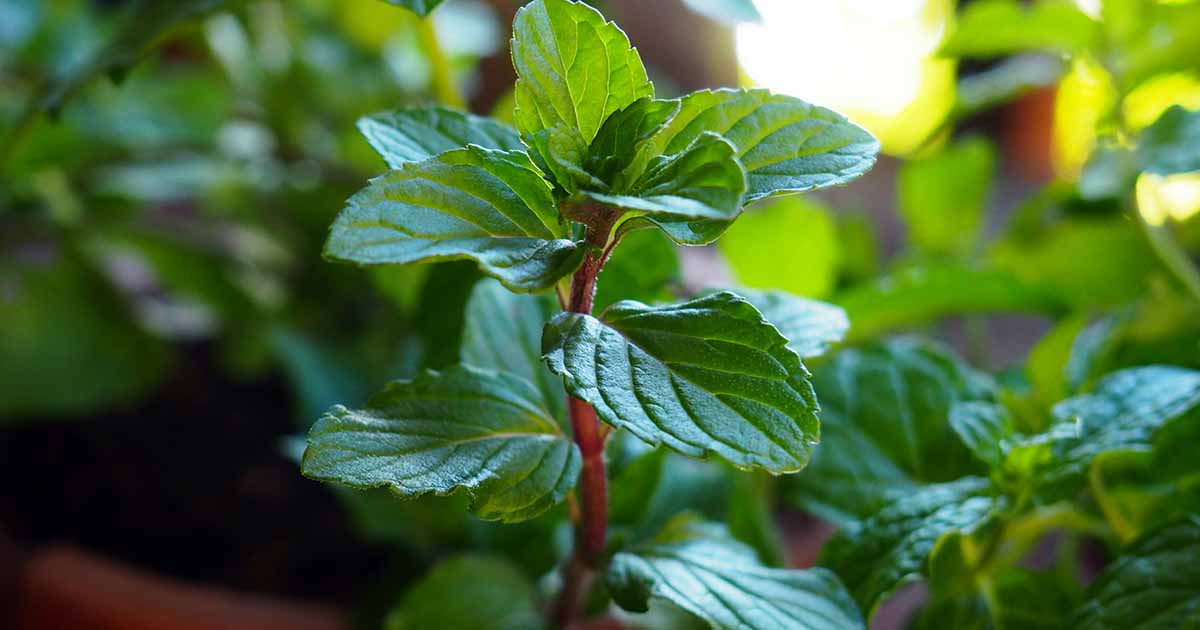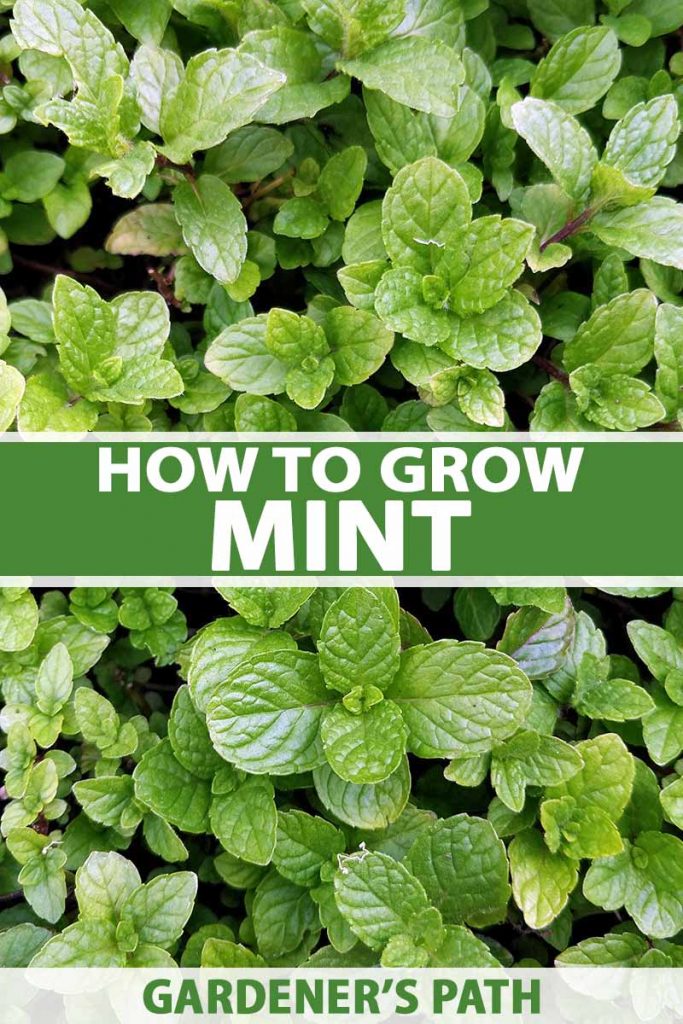Understanding Mint’s Lighting Requirements
Mint plants are known for their versatility and ability to thrive in a variety of lighting conditions. While most mint varieties require full sun to partial shade, some can tolerate full shade. However, it’s essential to understand that mint plants grown in shaded areas may not produce the same level of essential oils as those grown in sunnier conditions. When considering growing mint in shade, it’s crucial to choose a variety that is well-suited for shaded areas. Can mint grow in shade? The answer is yes, but it’s vital to provide the right conditions for optimal growth.
In general, mint plants require at least 4-6 hours of direct sunlight per day to thrive. However, some varieties can tolerate as little as 2-3 hours of direct sunlight. When growing mint in shaded areas, it’s essential to ensure that the plants receive some indirect sunlight. This can be achieved by placing the mint plants near a north-facing window or under a tree with dappled shade. By providing the right amount of light, you can help promote healthy growth and prevent the mint plants from becoming leggy or weak.
It’s also important to note that mint plants grown in shaded areas may be more susceptible to disease and pests. This is because shaded areas can be more humid, creating an ideal environment for fungal diseases and pests to thrive. To prevent this, it’s essential to ensure good air circulation and drainage in the shaded area. This can be achieved by adding organic matter to the soil and ensuring that the mint plants are not overcrowded.
How to Grow Mint in Partial Shade
When growing mint in partial shade, it’s essential to choose a variety that is well-suited for shaded areas. Some popular mint varieties for partial shade include peppermint, spearmint, and apple mint. These varieties tend to be more compact and produce smaller leaves, making them ideal for shaded areas.
Soil requirements for mint in partial shade are similar to those in full sun. Mint prefers well-draining soil that is rich in organic matter. Adding compost or well-rotted manure to the soil can help improve its fertility and drainage. It’s also essential to ensure that the soil is consistently moist, but not waterlogged.
Watering schedules for mint in partial shade will depend on the specific climate and weather conditions. As a general rule, mint in partial shade requires about 1-2 inches of water per week. This can be achieved through a combination of rainfall and supplemental watering. It’s essential to avoid overwatering, as this can lead to root rot and other problems.
When choosing a shaded area for mint, it’s essential to ensure that it receives some indirect sunlight. This can be achieved by placing the mint plants near a north-facing window or under a tree with dappled shade. By providing the right amount of light, you can help promote healthy growth and prevent the mint plants from becoming leggy or weak.
In addition to choosing the right variety and providing the right growing conditions, it’s also essential to consider the importance of air circulation and drainage in shaded areas. Good air circulation can help prevent fungal diseases and pests, while proper drainage can help prevent waterlogged soil. By taking these factors into consideration, you can help ensure that your mint plants thrive in partial shade.
The Benefits of Growing Mint in Shade
While mint plants can thrive in full sun, growing them in shaded areas can provide several benefits. One of the most significant advantages of growing mint in shade is the reduced risk of leaf scorch. Leaf scorch occurs when the leaves of the mint plant become damaged due to excessive sunlight, leading to a decrease in the plant’s overall health and productivity. By growing mint in shade, you can minimize the risk of leaf scorch and promote healthier leaves.
Another benefit of growing mint in shade is improved soil moisture retention. Shaded areas tend to retain more moisture in the soil, which can be beneficial for mint plants that prefer consistently moist soil. This can lead to healthier roots and a more robust plant. Additionally, the shade can help to reduce soil temperature, which can also promote healthier root growth.
Shade can also help to increase pest resistance in mint plants. Many pests, such as aphids and spider mites, prefer sunny conditions and can be less active in shaded areas. By growing mint in shade, you can reduce the risk of pest infestations and promote a healthier plant. Furthermore, the shade can help to promote a more compact and bushy growth habit in mint plants, making them more attractive and easier to harvest.
It’s worth noting that while shade can provide several benefits for mint plants, it’s essential to ensure that the plants receive some indirect sunlight. This can be achieved by placing the mint plants near a north-facing window or under a tree with dappled shade. By providing the right amount of light, you can help promote healthy growth and prevent the mint plants from becoming leggy or weak.
Overall, growing mint in shade can provide several benefits, including reduced risk of leaf scorch, improved soil moisture retention, and increased pest resistance. By choosing the right variety and providing the right growing conditions, you can promote healthy growth and enjoy a bountiful harvest of fresh mint leaves.
Choosing the Right Mint Variety for Shade
When it comes to growing mint in shaded areas, choosing the right variety is crucial. Some mint varieties are better suited for shaded areas than others, and selecting the right one can make all the difference in the success of your mint garden. In this section, we’ll explore some of the best mint varieties for shaded areas, including peppermint, spearmint, and chocolate mint.
Peppermint (Mentha piperita) is a popular mint variety that can thrive in shaded areas. It has a high tolerance for shade and can grow well in areas with as little as 2-3 hours of direct sunlight per day. Peppermint is also known for its compact growth habit, making it an excellent choice for shaded areas where space may be limited.
Spearmint (Mentha spicata) is another mint variety that can do well in shaded areas. It has a slightly higher tolerance for shade than peppermint and can grow well in areas with as little as 1-2 hours of direct sunlight per day. Spearmint is also known for its sweet, minty flavor and is often used in teas, cocktails, and desserts.
Chocolate mint (Mentha x piperita f. citrata ‘Chocolate’) is a unique mint variety that is perfect for shaded areas. It has a high tolerance for shade and can grow well in areas with as little as 2-3 hours of direct sunlight per day. Chocolate mint is also known for its distinctive chocolate-like flavor and aroma, making it a popular choice for desserts and drinks.
When choosing a mint variety for shaded areas, it’s essential to consider the specific growing conditions of your garden. Make sure to choose a variety that is well-suited for your climate, soil type, and amount of sunlight. By selecting the right mint variety, you can ensure a healthy and productive mint garden, even in shaded areas.
Overcoming Common Challenges When Growing Mint in Shade
While growing mint in shaded areas can be a rewarding experience, it’s not without its challenges. One of the most common challenges associated with growing mint in shade is reduced growth rates. Mint plants grown in shaded areas may not receive enough light to produce the same level of growth as those grown in full sun. However, this can be overcome by providing supplemental lighting or using grow lights.
Another challenge associated with growing mint in shaded areas is increased susceptibility to disease. Shaded areas can be more humid, creating an ideal environment for fungal diseases to thrive. To prevent this, it’s essential to ensure good air circulation and drainage in the shaded area. This can be achieved by adding organic matter to the soil and ensuring that the mint plants are not overcrowded.
Lower essential oil production is another challenge associated with growing mint in shaded areas. Mint plants grown in shaded areas may not produce the same level of essential oils as those grown in full sun. However, this can be overcome by providing the mint plants with enough light and nutrients. Using a balanced fertilizer and ensuring that the soil is rich in organic matter can help promote healthy growth and essential oil production.
To overcome these challenges, it’s essential to monitor the mint plants closely and adjust care routines accordingly. This may include adjusting watering schedules, fertilization, and pruning techniques. By providing the right care and attention, you can help promote healthy growth and overcome common challenges associated with growing mint in shaded areas.
In addition to these challenges, it’s also important to consider the potential for pests and diseases in shaded areas. Regularly inspecting the mint plants for signs of pests or diseases and taking action promptly can help prevent infestations and infections. By being proactive and taking steps to prevent common challenges, you can help ensure a healthy and productive mint garden, even in shaded areas.
Designing a Shaded Mint Garden
When designing a shaded mint garden, it’s essential to consider the specific growing conditions of your area. Choose a location that receives partial shade to full shade, depending on the type of mint you’re growing. Make sure the area is well-ventilated and has good air circulation to prevent fungal diseases.
Preparing the soil is also crucial for a successful shaded mint garden. Mint prefers well-draining soil that is rich in organic matter. Add compost or well-rotted manure to the soil to improve its fertility and drainage. If your soil is heavy clay or sandy, mix in some organic matter to improve its structure.
Selecting the right companion plants is also important for a shaded mint garden. Mint can be invasive, so it’s essential to choose plants that can compete with its spreading habit. Some good companion plants for mint include basil, lemongrass, and chamomile. These plants can help to repel pests and improve the overall health of your mint plants.
When designing your shaded mint garden, consider the mature size of your mint plants. Mint can spread quickly, so make sure to leave enough space between each plant. A general rule of thumb is to plant mint 12-18 inches apart. This will give the plants enough room to grow and prevent overcrowding.
Finally, consider the aesthetic appeal of your shaded mint garden. Mint is a beautiful plant with attractive foliage and fragrant flowers. Choose a location that is visible from your home or outdoor living space, and consider adding decorative elements like stones or garden ornaments to enhance the beauty of your garden.
By following these tips and considering the specific growing conditions of your area, you can create a thriving shaded mint garden that will provide you with fresh mint leaves for years to come.
Caring for Mint in Shade: Watering, Fertilizing, and Pruning
When caring for mint plants growing in shaded areas, it’s essential to monitor soil moisture and adjust care routines accordingly. Mint plants prefer consistently moist soil, but can be susceptible to root rot if the soil is too wet. Check the soil daily, and water only when the top inch of soil feels dry to the touch.
Fertilization is also crucial for mint plants growing in shaded areas. Use a balanced fertilizer that is high in nitrogen, as this will promote healthy leaf growth. Apply the fertilizer once a month, following the manufacturer’s instructions.
Pruning is another important aspect of caring for mint plants in shaded areas. Prune the plants regularly to encourage bushy growth and prevent them from becoming leggy. Remove any dead or damaged leaves, and cut back the stems to encourage new growth.
In addition to these care routines, it’s also important to consider the specific needs of your mint plants. If you’re growing mint in a container, make sure to use a well-draining potting mix and avoid overwatering. If you’re growing mint in the ground, make sure to mulch around the plants to retain moisture and suppress weeds.
By following these care routines and adjusting them according to the specific needs of your mint plants, you can help promote healthy growth and prevent common problems associated with growing mint in shaded areas.
It’s also important to note that mint plants growing in shaded areas may require more frequent pruning to maintain their shape and promote healthy growth. Regular pruning can also help to encourage the plants to produce more leaves, which can be harvested for use in cooking and other applications.
Harvesting and Using Mint from Shaded Areas
When it comes to harvesting mint from shaded areas, the best time to do so is in the morning, after the dew has dried but before the heat of the day. This is when the leaves are at their most fragrant and flavorful. Simply snip off the top sets of leaves with a pair of scissors or pinch them off with your fingers.
There are several ways to use fresh mint from shaded areas. One of the most popular ways is to add it to drinks, such as tea, lemonade, or cocktails. Mint is also a great addition to salads, sauces, and marinades. You can also use it to make homemade ice cream, sorbet, or other desserts.
If you want to preserve your mint for later use, there are several options. One way is to dry the leaves, either by air-drying them or by using a food dehydrator. You can also freeze the leaves, either by placing them in a single layer on a baking sheet and then transferring them to a freezer-safe bag or by chopping them up and mixing them with a little bit of water to make a frozen mint cube.
Another way to preserve mint is to make a mint syrup. This is a great way to capture the flavor and fragrance of fresh mint and use it in a variety of recipes. To make a mint syrup, simply combine fresh mint leaves with sugar and water in a saucepan and bring to a boil. Then, reduce the heat and simmer for a few minutes, or until the syrup has thickened slightly. Strain the syrup through a fine-mesh sieve and let it cool before using it.
Finally, you can also use fresh mint from shaded areas to make a variety of crafts and gifts. For example, you can use it to make a wreath or other decorative item, or you can use it to make a potpourri or other scented gift. The possibilities are endless, and with a little bit of creativity, you can come up with all sorts of unique and useful ways to use fresh mint from shaded areas.







